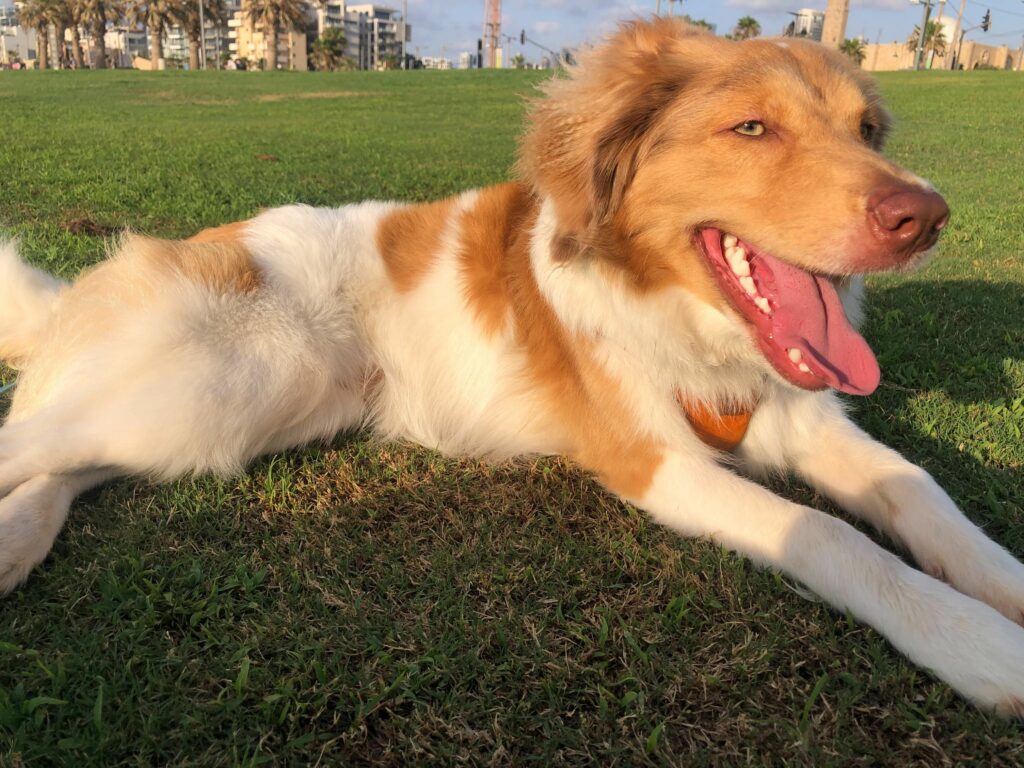Your dentist has probably discussed gum disease with you, leaving you feeling a bit anxious about how often you brush and floss. Not to pile on the guilt, but… did you know your dog can suffer from the same types of health issues if their chompers aren’t properly looked after?
Periodontal disease in dogs can be painful and expensive, and can lead to some serious health complications. The good news is that it’s pretty easy to prevent periodontal disease and keep your best friend’s teeth healthy.
- Periodontal disease, also called gum or dental disease, is a condition where bacteria and tartar in your dog’s mouth cause damage to important tissues.
- There are four stages of periodontal disease in dogs, the first being gingivitis.
- Symptoms of periodontal disease in dogs include gum swelling, bleeding, bad breath, difficulty chewing, and drooling.
- Depending on the severity of your dog’s case, treatment will include dental and root cleaning, and may require dental extractions in more severe cases.
- Brushing your dog’s teeth or feeding them dental treats or food, and bringing them for regular cleanings, will help prevent your dog from developing periodontal disease down the line.
What is periodontal disease?
Periodontal disease, more commonly referred to as gum or dental disease, affects the structures in your dog’s mouth that support the teeth—like gums, ligaments, and bone. As the disease progresses, those structures become so damaged that they can no longer support the teeth, causing them to become loose or to fall out. Woof.
This condition can start off with mild symptoms, like inflamed gums, but it can progress to serious, very painful symptoms that affect your dog’s ability to eat. If untreated, this dental issue can even affect essential organs like your dog’s heart, liver and kidneys.
What are the symptoms of periodontal disease in dogs?
Periodontal disease often starts with no symptoms, so you might not even be aware that your dog has it. Because it’s easy to overlook this condition, it’s very important to make sure that you take your dog to your vet for annual checkups.
The early signs of periodontal disease include red or puffy gums. Your dog’s gums might bleed when they chew, and your pup might have unusually bad breath.
If periodontal disease goes progresses without treatment, it can lead to many additional symptoms:
- Receding gums and inflammation of the gums
- Exposed tooth roots
- Loose or missing teeth
- Excessive drooling
- Bleeding gums, resulting in blood in a water bowl or on chew toys
- Decreased appetite
- Trying to chew on just one side of the mouth, or dropping food when trying to eat
- Bloody saliva
Dogs with advanced periodontal disease may be in significant pain. They may have trouble chewing and might exhibit behavior changes, acting withdrawn or reluctant to play. As the disease progresses, it can lead to bone loss and tooth loss.
If periodontal disease continues to advance, your dog may experience significant and even life-threatening health issues, such as:
- Jaw fractures
- Tooth abscesses
- Oronasal fistulas, which are holes that can develop between your dog’s mouth and nasal passages
- Eye issues, and even blindness
- Heart disease
And it’s not just your pup’s mouth that is at risk. The bacteria and toxins present there could potentially travel to the body, increasing the risk of health problems like liver disease, kidney disease, and heart disease.

What causes periodontal disease in dogs?
Periodontal disease starts with the bacteria that are naturally present in your dog’s mouth. When your dog has a meal, bacteria eat away at any food that’s left in your pup’s mouth, creating plaque. That plaque can build up along your dog’s gum line. If it’s not removed, it hardens into tartar.
Tartar can cause a condition called gingivitis, where your dog’s gums are irritated and inflamed. Gingivitis is an early stage of periodontal disease. If it’s not treated, it can lead to serious and painful symptoms.
Periodontal disease is surprisingly common, so it’s important to keep an eye out for this dental issue. According to the World Small Animal Veterinary Association Global Dental Guidelines, nearly 90% of dogs who are two years or older have developed periodontal disease.
How is periodontal disease treated?
The treatments for periodontal disease depend on how advanced the condition is. If the disease is caught early—in the gingivitis stage, before any supporting tooth structures have been damaged—it can easily be reversed with prompt treatment.
To treat gingivitis, your vet will recommend a professional dental cleaning. Your dog will be put under general anesthesia and your vet will remove plaque and tartar from the tooth surface and polish the teeth. Your vet will probably take full x-rays of your dog’s mouth and check around each tooth for any damage to the gums and surrounding bone.
If your dog’s periodontal disease is more advanced, your vet will perform the dental cleaning but add in some additional steps. They may apply an antibiotic gel to areas where pockets are forming in the gums, encouraging those pockets to close.
Dogs with teeth that are significantly diseased and painful will often require tooth extractions and pain medication following surgery.
You’re probably wondering how much all of these treatments cost. The unsatisfying answer is: It depends.
Treatment costs can vary, and they will be more affordable if your dog’s periodontal disease is caught early. Your region, the specific dental procedures needed and your vet office’s rates can also affect how high your bill will be.
Regular dental cleanings for dogs start around $500 to $1,000, but those costs will increase for a more complicated cleaning to treat gum disease. X-rays start at around $250.
Your vet might refer you to a dental specialist for cleaning and extractions, in which case the cost of your vet visit could be $2,000 or more.
Some good news: Lemonade Pet health insurance offers a dental illness add-on. If you get this add-on, and your pup develops periodontal disease down the line, it can help cover the costs of treatments, procedures, diagnostics, and medications related to dental illness, including gingivitis and periodontal disease.
How can I prevent my dog from developing periodontal disease?
Preventing periodontal disease starts with caring for your dog’s dental health at home. Just like you brush your teeth with perfect regularity—right?—your dog will benefit from the same habits.
Daily brushing can help to prevent plaque build-up, and it also gives you a chance to regularly examine your dog’s mouth so you’ll have early warning if anything seems unusual.
It can take some time to teach your dog to be comfortable with having their teeth brushed, but it’s worth the effort if it means keeping your pup’s chompers in tip-top shape.
You can also feed your dog a prescription dental diet designed to prevent plaque and tartar buildup. You can also give your dog tooth-friendly toys to help clean the teeth.
The Veterinary Oral Health Council has a list of accepted products that can help to support your dog’s oral health. Those products include options like dental diets, water additives, toothpaste, toothbrushes and wipes.
It’s also important to make sure that your dog sees the vet at least annually for a complete exam that includes a dental exam. Your vet can help you to monitor your dog’s dental health and spot any early signs of gum disease.

Lemonade offers several Preventative Care packages to help cover the costs of your dog’s ongoing care, like wellness exams and vaccines. Lemonade’s Preventative+ package will even help pay for your dog’s annual dental cleaning.
Before we go brush our teeth…
Periodontal disease can cause serious health issues for your dog, but luckily it’s easy to prevent. Focusing on your pup’s dental health and making sure your dog receives regular checkups with your vet can help to reduce the chances of gum disease, and to catch the issue early on in the likely event your pup develops some oral health issues down the line.
With prompt treatment, you can protect your dog’s pearly whites and avoid the many potential issues that periodontal disease can cause. That’s something to smile about.
A few quick words, because we <3 our lawyers: This post is general in nature, and any statement in it doesn’t alter the terms, conditions, exclusions, or limitations of policies issued by Lemonade, which differ according to your state of residence. You’re encouraged to discuss your specific circumstances with your own professional advisors. The purpose of this post is merely to provide you with info and insights you can use to make such discussions more productive! Naturally, all comments by, or references to, third parties represent their own views, and Lemonade assumes no responsibility for them. Coverage and discounts may not be available in all states.





